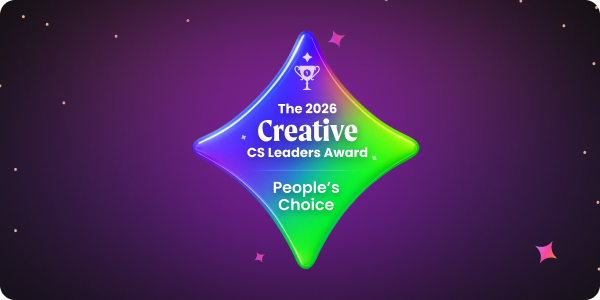Implement three proven strategies to scale customer success in high-growth B2B environments. Map customer journeys effectively by defining digital versus high-touch stages, enabling global teams to allocate resources strategically while personalizing interactions at scale.
Map Your Customer Journey and Define Which Stages Are Digital vs. High-Touch
In today's highly competitive business landscape, scaling customer success is crucial for companies aiming for high-growth. By effectively scaling customer success, organizations can ensure that their customers receive the necessary support and guidance throughout their journey, leading to increased satisfaction, retention, and ultimately, revenue. In this blog post, we will explore five proven strategies to scale customer success successfully.
To begin with, mapping your customer journey and defining which stages are digital versus high-touch is a fundamental step in scaling customer success. Understanding the different touchpoints your customers have with your business allows you to allocate resources strategically and personalize interactions accordingly.
Start by visualizing the end-to-end customer journey, from initial awareness to becoming a loyal advocate. Identify each stage and assess whether it requires a digital or high-touch approach. Digital interactions typically involve self-service resources, such as knowledge bases, FAQs, or chatbots, while high-touch interactions involve direct human contact, such as one-on-one meetings, phone calls, or personalized emails.
By categorizing the stages, you can determine which areas of the customer journey can be automated or streamlined with digital tools, and which require personalized attention from your customer success teams. This approach ensures that you deliver the right level of support to customers at each stage, optimizing resource allocation and enhancing the overall customer experience.
{{cta-scale-2}}
Personalize at Scale Using Technology
Personalization is key to building strong customer relationships. However, as your customer base grows, it becomes challenging to provide personalized experiences to each individual. This is where technology comes to the rescue. By leveraging technology effectively, you can personalize customer interactions at scale, ensuring a tailored experience for every customer.
Here are a few strategies to personalize at scale using technology:
- Customer Segmentation: Segment your customer base based on specific criteria such as industry, company size, or product usage. By grouping customers with similar needs and characteristics, you can create targeted messages and offers that resonate with each segment. Utilize customer relationship management (CRM) software or marketing automation tools to manage and track customer segmentation effectively.
- Behavioral Tracking and Analytics: Implement tools that allow you to track customer behavior and gather valuable insights. By analyzing how customers interact with your product, website, or support channels, you can identify their preferences, pain points, and engagement patterns. This data empowers you to tailor your customer success strategies accordingly, anticipating their needs and delivering proactive solutions.
- Automated Email Campaigns: Email remains one of the most effective communication channels. Create automated email campaigns triggered by specific actions or milestones, such as onboarding, feature adoption, or contract renewals. Use personalized content and recommendations to nurture the customer relationship and drive engagement. Email marketing platforms and customer success software can help automate these campaigns and track their effectiveness.
- Proactive Support with Chatbots: Chatbots are an excellent way to provide immediate assistance to customers and resolve common queries. Implement chatbots on your website or within your product to offer 24/7 support. Leverage artificial intelligence (AI) and machine learning (ML) capabilities to make chatbots more intelligent and capable of handling complex interactions. Ensure that chatbots seamlessly escalate conversations to human agents when necessary to maintain a personalized touch.
Embracing Customer-Led Journeys

A customer-led approach acknowledges that there is no one-size-fits-all solution and recognizes the importance of allowing customers to take ownership of their own customer lifecycle.
Customer-led organizations prioritize delivering value and facilitating a seamless customer journey that aligns with the customer's desired outcomes. This approach involves providing customers with the freedom to choose their own adventure within the product ecosystem, ensuring a personalized and self-guided experience.
Here are key elements of a customer-led journey:
- Personalized Onboarding: A customer-led journey begins with a personalized onboarding experience. Instead of following a predefined path, customers are guided through a journey that’s being created real-time as they define their expected business outcome from the software. The tailored onboarding process includes relevant resources, tutorials, and guidance that address their specific needs. This personalized approach sets the foundation for a customer-led relationship.
- Self-Service Resources: the underlying assumption of a customer-led journey is that even the most high-touch customers, still prefer to go through certain self-serve milestones, based on their preferences for when and how to consume content. Customer-led organizations empower customers with self-service resources that enable them to explore and discover at their own pace. These resources may include comprehensive knowledge bases, video tutorials, community forums, and interactive documentation. By providing easily accessible and searchable information, customers can find answers to their questions, troubleshoot issues, and learn how to make the most of the product or service. Self-service resources enhance the customer's sense of autonomy and enable them to take control of their journey.
- Flexible Feature Adoption: In a customer-led approach, customers have the flexibility to choose which features they want to adopt and when. Rather than overwhelming customers with a barrage of features, organizations provide the necessary information and support for customers to make informed decisions. This flexibility allows customers to align the product's capabilities with their specific needs, enhancing their overall experience and satisfaction.
.avif)
Embracing a customer-led approach requires a mindset shift within the organization. It involves aligning teams across departments, such as marketing, sales, product, and customer success, to collaborate and create a cohesive customer experience. By putting the customer in control of their journey, organizations can foster stronger relationships, drive customer satisfaction and advocacy, and ultimately fuel high-growth. EverAfter empowers customer success teams to design and execute customer-led journeys using customer facing hubs.


.avif)

.png)

.png)




%20(1).png)
















.png)
.png)
.png)



.avif)





.png)
.png)







